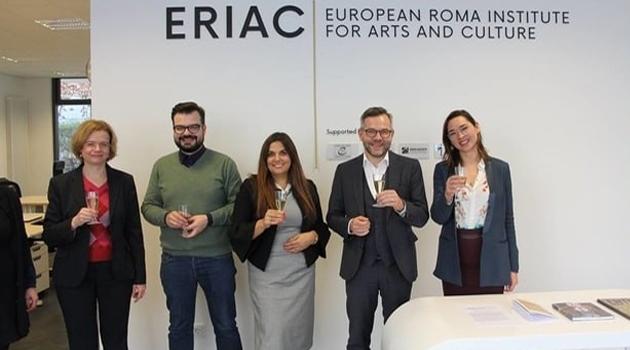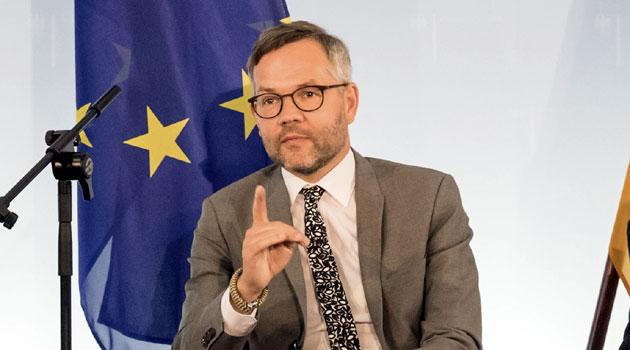ERIAC hosts International Cultural Outreach Program in 7 cities to showcase their activities

The European Roma Institute for Arts and Culture, also known as ERIAC, is a joint initiative of the Council of Europe, the Open Society Foundations and the Alliance for the European Roma Institute. It exists to increase the self-esteem of Romani people and to reduce the negative prejudices of the majority population towards Roma by promoting Romani arts, culture, history, and media. It acts as a center to support the exchange of creative ideas, and as a promoter of Romani contributions to European culture and talent, as an institution documenting the historical experience of Romani people in Europe.
According to the ERIAC website, their main long term aims are also “to raise awareness among European institutions, policy-makers, and stakeholders about the role of Roma arts and culture and to build up a broad partnership across Europe (and beyond) for support of Roma arts, culture, and communities.”
ERIAC’s main international activity is its International Cultural Outreach Program, financed by the Federal Foreign Office of the German Government. Between January and February of 2018, seven international events took place to introduce ERIAC to diverse audiences and to ensure the bottom-up formation of its strategic direction, based on Roma leadership. The outreach also serves to create enthusiasm and gain support for ERIAC among Roma and non-Roma individuals, public and private institutions, mainstream cultural and artistic institutional partners, and potential donors.
The first event, “Déjame Que Te Cuente/Allow Me To Explain: New Perspectives of an Old Art” took place in Seville, Spain from 24-25 January 2018. The highlight of the event was a concert by the famous Gitano (Spanish Roma) flamenco artist, Diego Amador. In addition to the concert, all the panelists at the event self-identity as Gitanos and are linked to their respective Romani communities. The aim was to discuss the challenges Gitano artists of flamenco face today given public administration bodies in Spain are the main supporters of the flamenco industry. The participants also aimed to reclaim flamenco as an art form originating from Romani culture and discussed the possibility of achieving political recognition for Gitanos as the creators of flamenco. UNESCO’s 2010 declaration of “Flamenco as Intangible Cultural Heritage of Humanity” only makes marginal reference to Gitanos’ contribution to this art form.
The next event, “The Future of Roma History: Remembrance, Historical Justice and the Role of Roma Youth,” took place in Krakow, Poland from 1-2 February 2018. It aimed to provide a space for different stakeholders and institutions to discuss the current state of historiography and commemorative practices as well as future agendas with regards to Roma history. The event allowed those attending to advance the process of shaping and promoting Roma historical narratives by providing a platform for Roma youth activism.
The third ERIAC event, “The Future of Roma Cultural Heritage”, held in Budapest, Hungary from 8-9 February 2018, showcased Hungarian Roma arts and culture. It helped spread ERIAC’s message that Roma artistic and cultural heritage must be documented and to provide opportunities for creative exchange between Roma people.
From 12-13 February 2018 the event, “Supporting the Development of Romani Culture: Present Challenges and Opportunities for the Future,” was held in Prague and involved the presentation of Romani culture both in the Czech Republic and abroad. There were also discussions about the challenges of the financing for Roma cultural projects and the development of Roma cultural heritage.
The next ERIAC event, held in Rome on 14 February 2018, was called “European Roots of Roma Arts and Culture and Future Perspectives of Roma and Sinti Minority in Italy.” There was a debate about the official recognition of minority status for the Roma and Sinti in Italy and official recognition of the Romani victims of the Holocaust, as well as the importance of teaching Roma history to combat racism. This event was extremely important because it marked the first time an event to honor the Roma culture on such a high political level has ever happened in Italy, where the Roma are generally seen as a social and security problem.
The next event held in Bucharest, Romania, from 21-22 February 2018, called “Roma Contribution to the Centenary of the Modern State of Romania” included academic presentations about Roma contributions to the founding and development of the Romanian state. There was also a performance of the play, “The Big Shame/Marea Rusine,” directed by Alina Serban. The play deals with the topic of Roma slavery in Romania and Moldova and the involvement of the Romanian Orthodox Church with this problem. There was also a debate about the fact that this topic is usually left out of the public discourse in Romania today.
The final ERIAC introductory event, “Connecting Peripheries for De-colonizing Europe: Common Vision for a New Humanity” took place in Berlin, Germany on 26 February and featured discussions about the future of the Roma led by visionary women intellectuals, including Professor Gayatri Chakravorty Spivak; Dr. Ethel Brooks of Rutgers University; Dr. Nicoleta Bitu, the Chair of the RomArchive Board; Dr. Angela Kocze of Central European University; and Timea Junghaus, the Director of ERIAC. The Romani feminists proposed rethinking the relationship between nationalism and diversity as part of searching for the answer to what it means to be European today.
